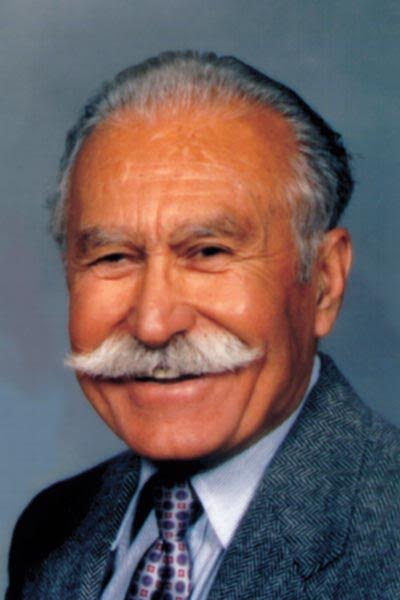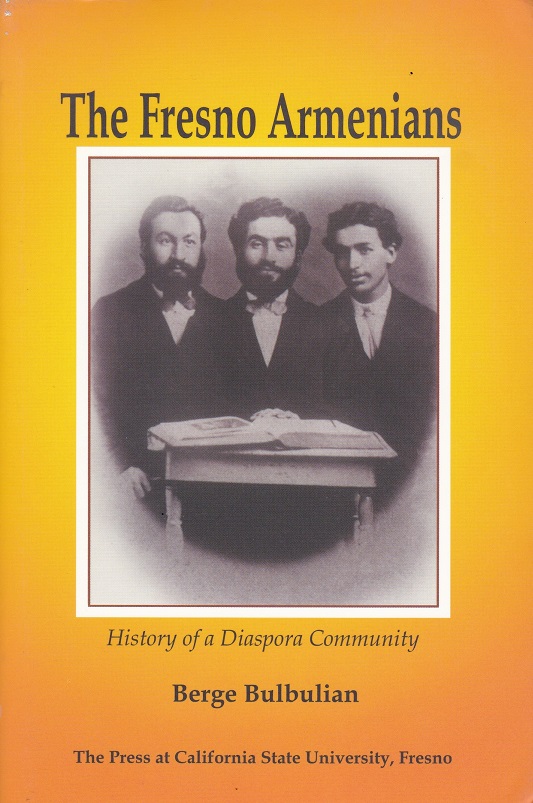| Titre : | The Fresno Armenians / auteur(s) : Berge BULBULIAN - History of a Diaspora Community |
|---|
| Editeur : | The Press at California State University |
|---|
| Année : | 2000 |
|---|
| Imprimeur/Fabricant : | |
|---|
| Description : | 15,5 x 23 cm, 287 pages, couverture illustrée en couleurs ; contient un dépliant, plan de "Old Armenian Fresno", avec noms des résidents par maison... |
|---|
| Collection : | |
|---|
| Notes : | Références bibliographiques et index |
|---|
| Autres auteurs : | |
|---|
| Sujets : | Armenian Americans - California - Fresno |
|---|
| ISBN : | 9780912201351 |
|---|
| Lecture On-line : | non disponible |
|---|
Commentaire :"Whether the missionairies (who first went to the Ottoman Empire in 1812 to convert follower of Islam to Christianity) helped save thousands of Armenians from certain death, or whether the conversion of many Armenians led to disunity that brought on the death of the Armenian nation depends on one's historical perspective." Christian missionaries in the Middle East ultimately led to the phenomenon of Armenians migrating to Fresno, California, to escape persecutions and prosper in a strange yet familiar land. At one point, Fresno had the largest population of Armenian people in the United States. Much more than a coffee-table edition of provincial or regional significance, "The Fresno Armenians," by Berge Bulbulian, is a modern history of Armenians in their former capitol of the New World. Armenians provided a tremendous contribution to the growth and culture of a community reluctant to embrace their arrival, but glad to have the benefit of their participation and labor. Fresno, California became , as a result, the center of agricultural production in the world. A huge array of crops grow on the fertile alluvial plain that rests between the Sierra Nevada mountain range and the coast range of California, with much thanks to the efforts of Armenians. To gain the distinction of the "Breadbasket of the World," the valley needed ingenuity, sweat and toil of the Diaspora immigrants to change the desert landscape into a garden that would rival ancient Mesopotamia. Among the earliest immigrants to Fresno, Armenians were directed to California by the Christian missionaries who infiltrated their homeland, splitting their ancient church in two. In Fresno, Armenians found a dusty village on the train tracks in the barren wastes of the Central Valley, and would have left immediately, save for one-way train tickets. The first Armenian arrivals established an outpost for others facing persecutions and slaughter by the pre-Ottoman Turks in the 1890's. Realizing what the future foretold at home, and in search of security and freedom, many found their way to the eastern United States. Armenians leaving the homeland were educated, prosperous professionals, craftspersons, merchants and city-dwellers. They found work in the factories of the East Coast and industrial belts of the U.S. Letters from Fresno provoked many to leave and join their brethern in the west to mold the possibilities of an undeveloped territory. One of the most comforting of the otherwise disconcerting arrangements for the immigrants in early Fresno was the climate and soil, much like the weather and land they were accustomed to in the Middle-East. Shortly after the turn of the previous century, Armenians became the largest minority population in Fresno. "The Fresno Armenians" describes a remarkable history of a determined people driven by massacre and religious hatred from their 3,000 year old home in the Caucus Mountains and fecund plains of eastern Cilicia. In the San Joaquin Valley, Armenians became pioneers of agriculture very soon after their arrival. Through determined efforts of perserverance, they became leaders in business, religion, education and governement, prevailing in a difficult time of virulent discrimination. Presented in chronological order, "The Fresno Armenians" begins with a brief history of the nation before emigration. Suffering through centuries of foriegn domination and persecutions, the real end for Armenia came when the Ottoman Turkish government, between 1915 and 1923, annihilated 1.5 million innocent Armenian people. Many of the far-sighted had already established themselves in Fresno. Maintaining balance in a history like that of "The Fresno Armenians" is difficult at best, but successfully achieved in this study. The book sings loud praise to the successes of the Armenian community. But then again, the Armenians brought good business sense, decorum and cultivated civility to an otherwise wild-west railroad town. "The Fresno Armenians" details the number of Armenian arrests, crimes, divorces in the community, but does not provide scintillating details about the sensationl crimes, like Mark Arax's, "In My Father's Name." What little dark underside that existed in the Armenian community is overlooked. Nevertheless, Armenians have caused Fresno, the city and it's people, to rise to the heights of the immigrant's rich history, determination and craftsmanship and the whole of thecountryside has benefitted. The book is a compendium of the Armenian's great efforts and individuals in Fresno and the surrounding area, and contains all the details. |


